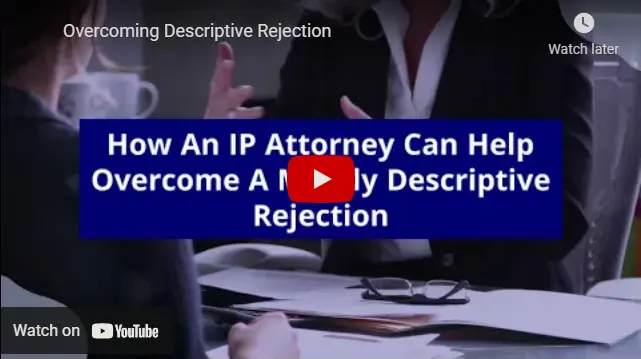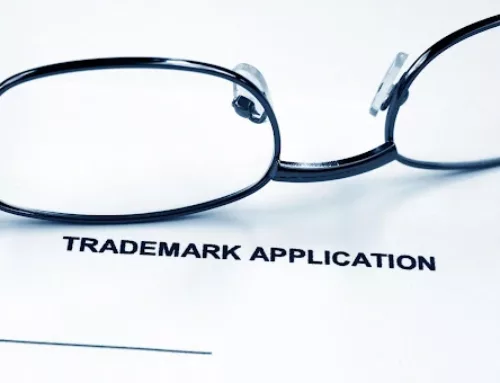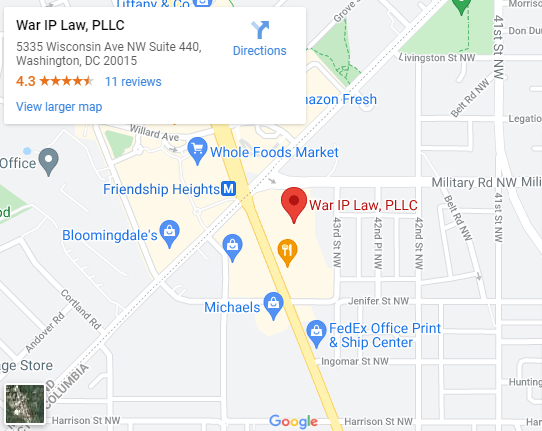The process of filing a trademark application and obtaining a registration certificate can be arduous and filled with several challenges to overcome. Unfortunately, many applications are rejected for a number of reasons – some of which can be resolved easily, while others present more significant roadblocks, requiring time, effort, and legal strategies, to overcome.
Discerning what went wrong in a trademark application is not always straightforward. One common issue that we encounter at War IP Law is the merely descriptive rejection. Essentially, this type of rejection is precisely what it sounds like: a refusal to accept a trademark because it is believed that the mark merely describes the goods or services. Overcoming a merely descriptive rejection, however, can be difficult and burdensome and in some cases, impossible.
At War IP Law, we have helped clients overcome a merely descriptive rejection, and understand how to successfully argue that a mark is registerable. If you have experienced a merely descriptive rejection, you have options. The expert trademark attorneys at War IP Law can guide you through the trademark application process. Call 202-800-3754 to consult an experienced intellectual property attorney about your specific questions today.
What Is a Merely Descriptive Mark?
The United States Patent and Trademark Office outlines the requirements of a merely descriptive rejection in Section §2(e)(1) of the Trademark Act. Here, the law states that a mark cannot be accepted if it is merely descriptive or deceptively misdescriptive of the goods or services associated with it. A trademark is considered merely descriptive if the mark explicitly describes a characteristic or quality of the goods or services that it represents. In essence, the trademark must be distinct and capable of distinguishing the goods or services for which it is used.
It can be difficult to distinguish between marks that are merely descriptive and marks that are considered distinct. Several court cases have outlined the various considerations that USPTO examining officers may consider when issuing a merely descriptive rejection:
- The mark describes even one significant function, attribute, or property of the goods or services.
- The mark describes the intended user of a project or service.
- The mark describes an ingredient, quality, characteristic, function, feature, purpose, or use of the goods or services.
- The mark indicates a subset of services provided
Identifying a Merely Descriptive Mark
As mentioned above, the USPTO considers an array of factors when determining whether a mark is distinct or merely descriptive. The line separating these two categories, and therefore separating an approved trademark registration from a rejection, can be blurry and difficult for a person not experienced in trademark law to understand.
Some examples of marks that were rejected due to their being merely descriptive include:
- A veterinarian’s clinic named “Veterinary Technician Specialist.”
- “OatNut,” a type of bread made with oats and hazelnuts.
- A chocolate fudge flavored diet soda named “Chocolate Fudge.”
- “Cold and Creamy,” as a brand name for an ice cream company
- A highly automated cooling tower company referred to as “SmartTower.”
Note that in many of these examples, the mark refers to one ingredient or attribute of the product or service. This meets the threshold of merely descriptive, further evidencing the stringency of the requirements. The USPTO will refuse a trademark application if any literal element of the product or service is described by the mark.
How To Overcome a Merely Descriptive Rejection?
While it can be difficult to overcome a section §2(e)(1) rejection, in many cases it is not impossible. If the applicant disagrees with the decision that a mark is merely descriptive, they can respond to the office action and if a final rejection is issued they are able to file an appeal with the USPTO by using Form AIA/31 and paying the requisite fee. The following strategies may be used to successfully overcome a merely descriptive rejection.
Argument of Multiple Interpretations
If the mark could be considered a double entendre or possess multiple possible interpretations, that could be a viable argument against a merely descriptive rejection. In re The Place, Inc., 76 USPQ2d 1467, 1470 (TTAB 2005), the Trademark Trial and Appeal Board held that the formerly rejected mark, “Urban Housing” was merely descriptive, but the modified mark, “URBANHOUZING” transforms it into an inherently distinctive mark.
In this case, the applicant successfully argued that a portion of the mark, “ZING,” is a double entendre, suggesting that “zing” refers to a quality that excites interest or enthusiasm as well as a movement with speed or vitality. Since “zing” could refer to the speed or vigor in which the applicant’s services are performed, the newly modified mark was accepted.
Argument of Suggestiveness
The USPTO outlines the requirements for a mark to be considered suggestive. They state that the mark must compel imagination, thought, or perception in order to reach a conclusion as to the nature of the goods or services. For example, In re The Noble Co., 225 USPQ 749 (TTAB 1985), the Board found that “NOBURST” was an acceptable mark for a liquid antifreeze and rust inhibitor because it suggests the desired result of the product. The mark does not inform the consumer of any characteristic, feature, or function of the product.
Expert Affidavit
As with other types of trademark rejections, including likelihood of confusion rejections, obtaining evidence in support of the mark can be an ideal strategy for overcoming a merely descriptive rejection. USPTO examiners are attorneys who value concrete evidence, and expert sponsorship for a mark in the form of an affidavit can be compelling. The expert should have good credibility, experience, and the ability to expand upon the benefits of the mark.
Can An IP Attorney Help with Overcoming A Merely Descriptive Rejection?
The USPTO can be quite stringent in their requirements for trademark applications, oftentimes making the process of appealing a merely descriptive rejection stressful and cumbersome. In some cases, seeking legal advice can help alleviate this burden.
Experienced IP attorneys can create a personalized strategy for appealing a USPTO decision, helping to change a rejection into an approval. At War IP Law, we understand the process of obtaining a trademark registration and we are committed to helping individuals reach their IP goals. For more information on overcoming a merely descriptive rejection, consider contacting an IP law attorney at War Law today.






